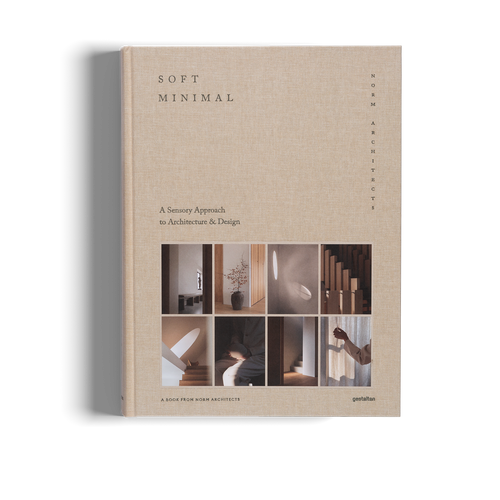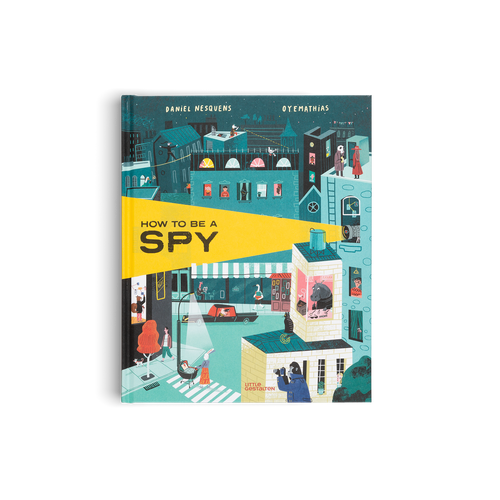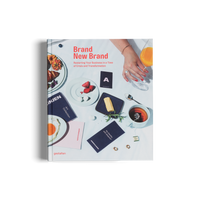
03/2021 visual culture
Badal Patel was halfway to becoming a Biochemistry graduate when she had a moment of reckoning, knowing that she had been lying to herself about which career path she ought to follow. In a moment of shock to her Indian-American family, she mustered up the courage to tell them that she wanted to become a graphic designer.
Patel was a high-energy teenager always looking for something to create. "You could find me creating wooden boats out of fallen branches in the backyard, sewing my purses, or taking ‘artsy’ photos on my camera phone," she jokes, "You could also find me working on design projects like creating very tasteful Xanga pages every other week." Growing up in a first-generation family in America, her muses were the creative people around her like her "dada (grandfather) who would photograph with a film camera and paint in those black and white photos with color." Or the women in the family who sewed beautiful garments and even wove homeware pieces.

Kulfi offers an alternative vision of beauty through its range of products designed especially for people of color. It aims to challenge what it calls the “toxic beauty standards within South Asian culture, defined by Eurocentric and patriarchal ideals.” (Work: Badal Patel, Brand New Brand)
Despite her creative surroundings, Patel went on to study Biochemistry for two years. Feeling distanced and falling out of love with the course, she called her cousin for advice. She told her, "You know, I always thought you’d end up doing graphic design." Patel didn't know what that meant, nor did her cousin fully, but after five minutes of Googling, she knew this was exactly what she wanted to do. "It took a lot of convincing to get my parents on board," she explains, "Penn State has a rigorous design program which was then run by Lanny Sommese." Instead of studying for her genetics exam, she decided to take a stab at using Adobe Illustrator for the first time to design a mock label for a nationwide design scholarship for Lipton tea. "I don’t know how, but I ended up winning the scholarship and that helped my parents see that I might have some potential," she explains.
Patel graduated, joined an agency, got burnt out, then decided to go at it alone. Taking on more niche projects allowed her to explore her style, which paved the way for her to be selected as a finalist by The One Club for Creativity. In recent years she has spearheaded a new era of visual identity for South Asian heritage brands in America. Two of her projects were featured in Brand New Brand, our recently released title that explores the dynamic face of visual branding and design studios presenting ever new ways to stand out. Patel reflects on her work and being considered one of the creative voices shaping a new generation of Indian-American brands seeking authenticity.

Korai Kitchen is a Bangladeshi restaurant located in Jersey City, owned and run by a mother and daughter team. The restaurant’s visual identity emphasizes this, by placing Amma, the mother, at the heart of communications. This is supported by a type pairing of Bengali script and English text that functions as a cross-cultural expression of authentic Bangladeshi cuisine. (Work: Badal Patel, Brand New Brand)
In Brand New Brand, we publish the Korai Kitchen visual identities. Can you tell us how both came about and what you created for each one?
The owners of Korai Kitchen approached me after seeing my work for Kolkata Chai Co (a chai cafe in New York). I was so compelled to work with them because their story was truly inspiring. Korai Kitchen is a Bangladeshi restaurant in Jersey City-owned and run by a mother and daughter team. The restaurant was born out of a mother’s love for cooking and her ambition to make her dreams a reality. For a long time, many Bangladeshi immigrants would come to America and open Indian restaurants or cook in Indian kitchens because that is what Americans were more familiar with.
The identity is a celebration of Bangladeshi cuisine and culture that has too often been grouped into and overshadowed by, Indian culture. The visual identity intends to emphasize this by showing Amma (mom) who makes the food while proudly displaying an all Bangladeshi menu. To make this distinction more prominent, I used Bengali script and phrases as part of the messaging. We further made these distinctions by using phrases such as ‘No Chicken Tikka Masala’ to proudly claim that they won’t be serving a very popular ‘Indian’ dish.
And how about Kulfi...
With Kulfi, I creatively directed and designed everything. From strategy to visual identity, packaging, campaign concept, art direction, copywriting—even product photography. I was able to be very hands-on, which I loved. And with that, I was also able to pull together a very talented team of women and BIPOC to collaborate on various components of the brand. That in itself was a very gratifying experience because now that I’m able to be in a position to lead, I want to shine a light on more up-and-coming talent especially within the BIPOC community.
The brand’s first product is Kajal (meaning eyeliner), which has traditionally been used to protect people from Nazar (the evil eye/gaze) in many different cultures. For women and gender-expansive folks of color, it can be exhausting to navigate the conflicting signals we receive from culture, society, and family. The 'Nazar No More' campaign is about empowering ourselves to define beauty from our perspective rather than the gaze of others. The art direction was inspired by actresses in Bollywood movies from the 1980s and 1990s who exquisitely conveyed so much emotion through their eye and hand gestures. Everything from the nuances like the inspiration behind the logo and art direction to the campaign concept and names for the kajal is another means to share experiences and tell stories. The fact that it’s been resonating with so many people shows me the impact and value of what one’s identity and personal experience can bring to such brands.
This project was particularly special to me. I never thought that designing a beauty brand focused on South Asians was something I wanted to do. Growing up, I never saw anyone in the beauty industry that looked remotely like me and it impacted my self-esteem and confidence. I can only imagine what my younger self would have thought seeing a brand like that featured on Vogue, Allure, and Refinery 29 to name a few. Only after being able to work on this project, I realized how much I wanted and needed this. Priyanka Ganjoo, the founder, said that it took her three months to find the right designer to work on strategy and branding and I’m so glad that she chose me to partner with because it’s been a real treat to bring this identity to life.

The challenge for Kulfi was to create a compelling visual identity that resonated with South Asian Gen-Zers and Millennials, but the brand was keen not to resort to the usual South Asian clichés. Badal Patel avoided referencing other beauty brands and instead favored a confident yet playful referential approach. (Work: Badal Patel, Brand New Brand)
Since those projects and previous collaboration with Korai Kitchen and Stage Kitchen, your work is becoming the modern microphone for South Asian culture in America. These brand identities feel authentic and a culturally relevant celebration of tradition, as opposed to the mainstream Western image portrayed for decades. Do you enjoy presenting this fresh face or is it a nerve-wracking task?
Do you hear that? It’s my nerves being wracked. At some point in my professional career, I realized I never tapped into my cultural identity when it came to designing things. What a thought! Finally, the lightbulb went off and I knew there was so much opportunity so I took it into my own hands starting with passion projects which then turned into full-on branding projects. I’ve enjoyed creating work that I’ve been wanting to see as an Indian American—but with that comes a lot of stress. Culture is so very important to people and every little detail of your design is open to scrutinization. I also acknowledge that my experience being born and raised outside of Philadelphia, Pennsylvania, will be very different to someone born and raised in India, let alone Pakistan, Bangladesh, or other South Asian countries. India as a country is so regional—meaning there are so many complexities that are unique to specific regions. There’s a lot to unpack when taking on projects that are culturally focused. It's a lot of pressure especially when you’re taking on the tasks of designing and representing those cultures.
All that said, I feel like the biggest pain-point for any POC trying to build a business is feeling like you’re stuck in a niche if you do anything related to your culture. Just because I’m Indian doesn’t mean I want to be only designing Indian or South Asian-related things. I was born and raised in America and up until very recently, I’ve been working on completely Western-focused designs. I used to work at Jones Knowles Ritchie where I’d work on brands like the Dieline, Kashi, and Budweiser, to name a few. It’s a constant struggle because yes, I do want to see more diversity within the design world (not just designers but the culture we add to the work) but I also don’t want to be known as that Indian designer. At the end of the day, if it’s good to work, it’s good to work.
Not to go on a complete tangent on this topic I think about the interview of Riz Ahmed on ‘stretching culture’ (Burden of Representation) a lot. It sums it up for me. Pulling out some quotes here:
“This idea of boundaries is something that a lot of artists coming up now can learn from. If we’re constantly rushing to represent, it disconnects us from our sense of self. It’s something I had to navigate when I was starting 15 years ago, as one of the only members of the Muslim diaspora appearing in TV dramas and releasing music. It created a tremendous amount of support, but also a lot of pressure and very high expectations. I was acutely aware that any role I inhabited risked becoming an archetype—it’s not like you were going to see ten other Muslim dudes in films that year. But it’s quite liberating to know that you can’t please everyone”

Patel used a bold use of unexpected color, a striking, custom-drawn logotype that is a modern take on Devanagari script, distinctive illustration, and art-direction that was inspired by the glowing qualities often seen in the vintage portraits of Bollywood actresses. (Work: Badal Patel, Brand New Brand)
I’m still working on that, knowing I can’t please everyone. He also continues to mention:
“We talk about the scarcity mentality—that there’s only room for one or two of us. But when you stretch the culture, you create more space for different kinds of people to tell stories. If there were more of us doing this, imagine what that freedom would feel like.”
I couldn’t agree more with his above statement. When I was in college, I was the only South Asian in my 16 person class. I didn’t know any other South Asian designers. Isn’t that crazy? Fast-forward to now, and with the help of social media (without sounding too old), I’m seeing a lot more creatives that are South Asian and I am so here for it.
Explore more of Badal Patel and other inspiring visual identity projects through Brand New Brand.













